Dracaena is one of the most popular decorative deciduous plants. Despite the fact that her homeland is the African tropics, she has adapted to indoor conditions, grows quickly and fits perfectly into any design style. Before planting the dracaena at home or in the office, you should familiarize yourself with the rules of care and the peculiarities of the species.

Content
- 1 Brief botanical description
- 2 Dracaena species
- 2.1 Marginata
- 2.2 Fragrant
- 2.3 Deremskaya
- 2.4 Sanderian
- 2.5 Godsef
- 2.6 Bent
- 3 When to plant dracaena
- 4 Preparing for landing
- 4.1 Growing conditions
- 4.2 Choosing a flowerpot
- 4.3 Priming
- 5 Planting methods at home
- 5.1 Layers
- 5.2 Seeds
- 6 Dracaena reproduction
- 6.1 Stem cuttings
- 6.2 Apical cuttings
- 7 Care after landing
- 7.1 Top dressing
- 7.2 Watering
- 7.3 Pruning and shaping the bush
- 7.4 Transfer
- 8 What time and how does dracaena bloom?
- 9 Diseases and pests of indoor palm
Brief botanical description
Dracaena (dragon dragon) is an evergreen plant from the asparagus family. A tree-like form is more common, less often a shrub.
Under natural conditions, the height of trees reaches 6 m, indoors - no more than 3 m. Long xiphoid leaves are collected in bunches (apical rosettes).
As it grows, the lower leaves dry and fall off, the trunk is bare, and a bunch of densely collected falling leaves remains on the crown. Due to the external similarity, tree-like dracaena are often called "false palms".
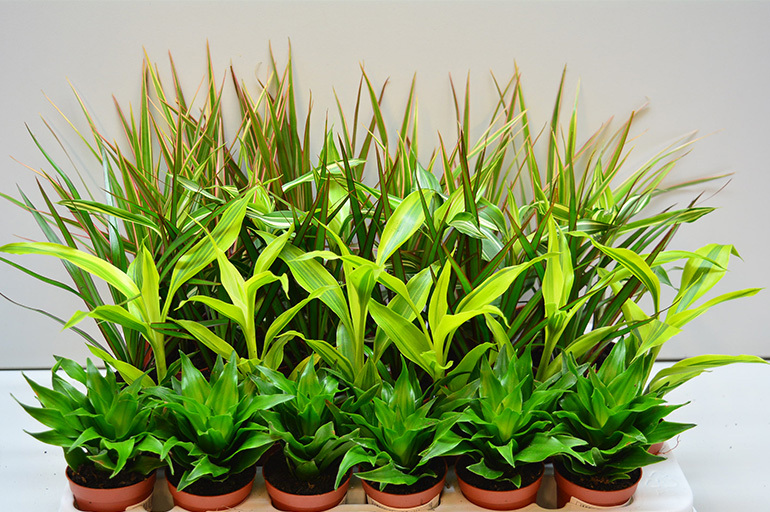
Dracaena species
There are about 60 varieties of indoor dracaena. They are distinguished by the height and thickness of the trunk, the size and color of the leaves. Experts distinguish green-leaved and variegated varieties. From all the variety, amateur flower growers choose those that are easier to care for.
Marginata
Dracaena bordered (Marginata) is the most popular variety. It is most similar to a palm tree, with good care it reaches large sizes (up to 2 m and more). The narrow, curved leaves are dark green in color. A red or burgundy dividing strip, less often yellow, runs along the edge of the leaf plate.
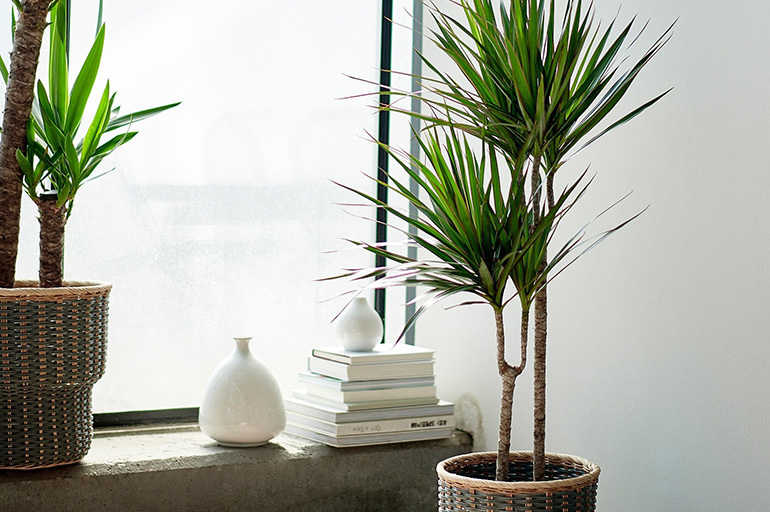
Fragrant
This type of shrub plant got its name due to the pleasant honey aroma emanating from flowering. Under natural conditions, dracaena blooms regularly, in indoor conditions it is extremely rare. Glossy leaves with wide light green or yellow stripes reach 1 m in length and 10 cm in width.
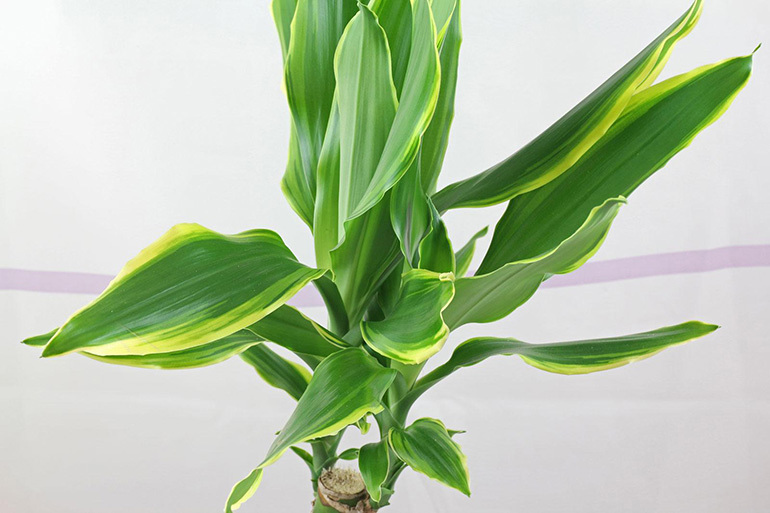
Deremskaya
This is one of the varieties of fragrant dracaena. Lance-shaped leaves are brightly colored with white or yellowish solid stripes. In addition to decorative properties, the ability to remove harmful substances from the air is noted.
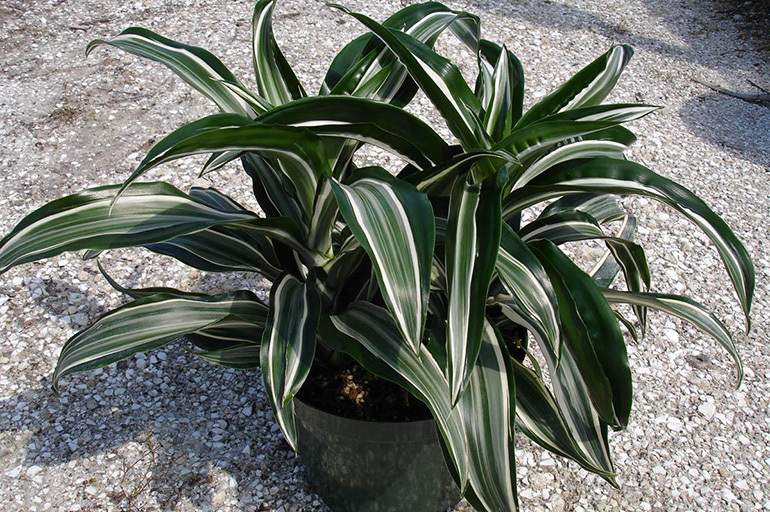
Sanderian
Dracaena Sanderian, or Sandera, is a low shrub (up to 1 m). The branches grow almost vertically from the base. The leaves are bright green with wavy edges and silvery stripes. Shoots with constrictions on the trunk are similar to bamboo, which is why Sandera is often called "lucky bamboo" or "fortune bamboo".
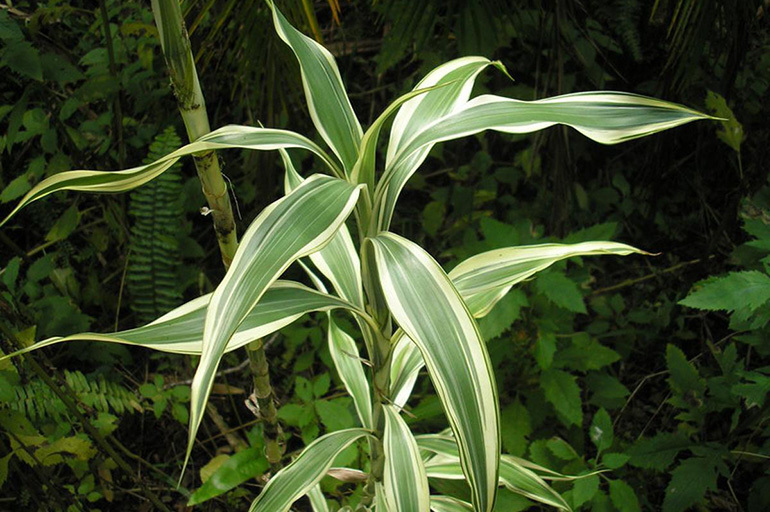
Godsef
A low shrub looks little like other types of dracaena. In shape and color of the leaf plate, it resembles a dieffenbachia or aucuba. Long stems lumber in the lower part, remain herbaceous from above. Leaves about 10 cm long and 4-5 cm wide are oval in shape.
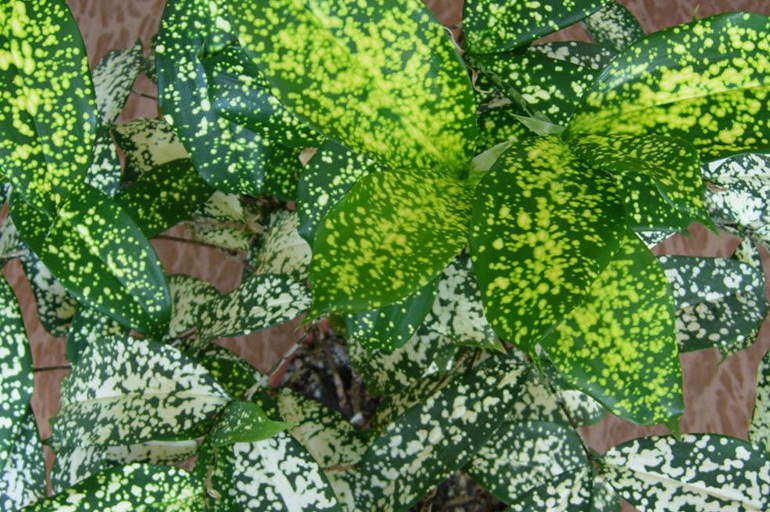
Bent
Dracaena bent (or curved) is a tree with lanceolate leathery leaves, bent downward. In nature, it reaches 6 meters in height. When grown at home, the top is often pinched to create a lush bush. Variegated varieties have yellowish-green or creamy stripes along the edge of the leaf blade.
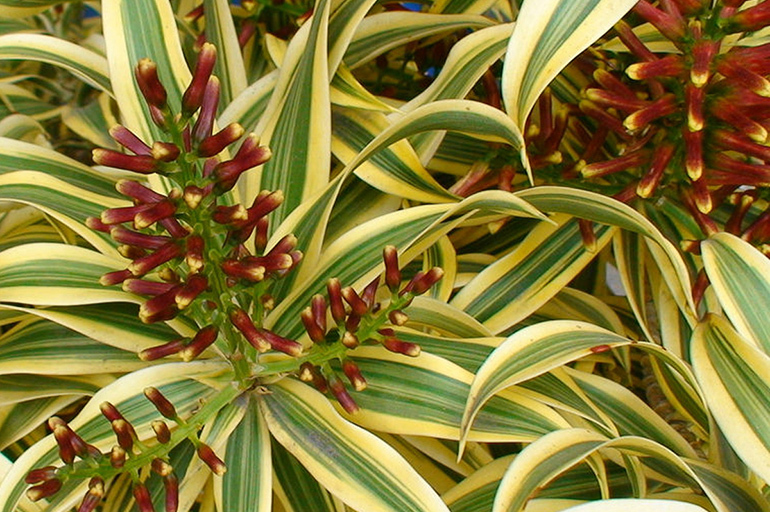
When to plant dracaena
At home, dracaena can be planted throughout the growing season. The best time is spring, when sap flow and other vital processes are activated. The plant accepts various types of fertilizers well.
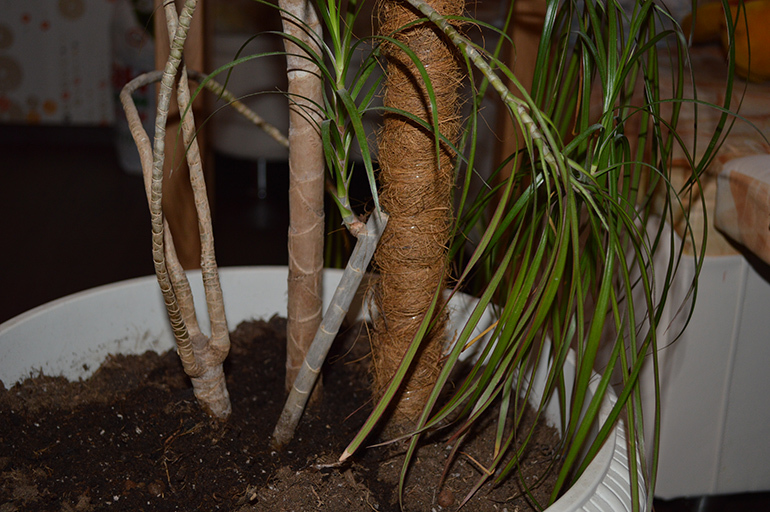
Many growers use the lunar calendar, taking into account favorable and unfavorable days for planting.
Preparing for landing
Before planting dracaena in your home, you should make sure that the conditions are suitable for the selected variety. It must be remembered that variegated varieties need a lot of light, otherwise they will quickly lose their decorative effect.
When buying a dracaena in a store, pay attention to:
- damage to the trunk and shoots;
- the presence of signs of disease or pests;
- development of the root system (the tree should sit tightly in the pot).
You can plant a plant in another container 2-3 weeks after purchase: it needs to adapt to new conditions.
Growing conditions
For all types of dracaena, sufficient lighting is required, so it is better to put the flowerpot on the southern or southeastern side of the house.
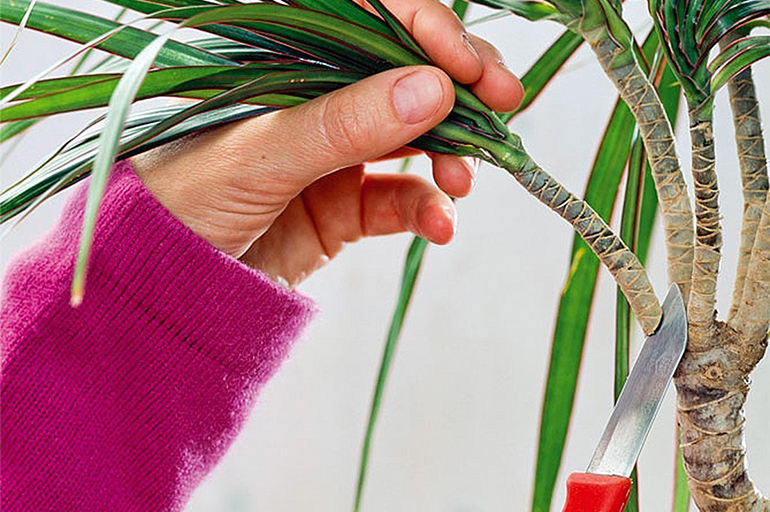
Green-leaved varieties should be protected from direct sunlight; in the heat they are placed in the back of the room.
Plants with variegated leaf color can be placed on the windowsill, but in summer it is better to stick a sunscreen film on the window glass.
During the growing season, the optimum air temperature is + 20... 26 ° C. It is useful to carry the dracaena to the loggia or balcony, protecting it from wind and drafts.
It is desirable to maintain the air humidity at the level of 70-80%. To do this, the leaves are sprayed from a spray bottle or wiped with a damp cloth. Once every 1-2 weeks, it is recommended to bathe the palm tree under the shower.
A layer of wet expanded clay or pebbles can be laid in the pallet. It humidifies the air well in an open aquarium or other container with water.
In winter, it is necessary to provide rest - gradually lower the air temperature to + 15 ° C and reduce watering.
Choosing a flowerpot
The pot should be selected based on the size of the plant, and it is more important to take into account the volume of the root system, rather than the crown. Roots should be loosely placed, with 4-5 cm left for growth. You should not buy a large flowerpot for a young seedling. The soil in it will be constantly waterlogged, and this leads to decay of the roots.
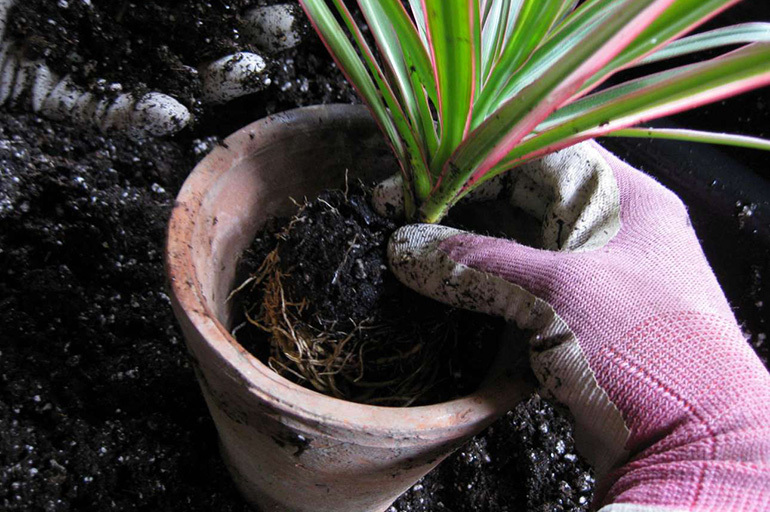
The rooted shoot is planted in a container with a diameter of 15-17 mm. As it grows, a flowerpot is selected 2-3 cm wider, 5-6 cm deeper.
It is desirable that the material from which the dishes are made is porous. If the clay pot is covered with glaze, the air permeability is reduced. Plastic containers with a drainage hole and a layer of expanded clay are also suitable.
Priming
The soil for dracaena should be nutritious and loose. To prepare the soil mixture, you need to take in equal proportions leafy soil, coarse river sand, peat and matured humus.
Another option: garden soil (3 parts), peat (1 part), coarse sand (1 part).
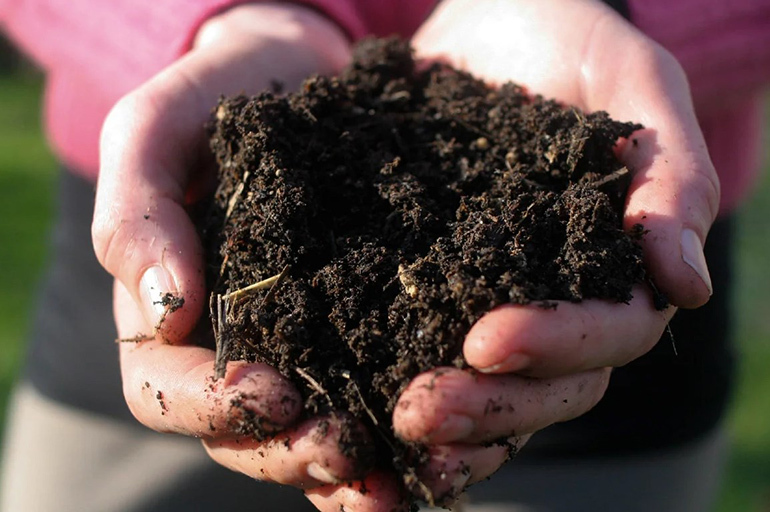
When buying soil, you should pay attention to the acidity of the soil, the optimal pH level is 5-6.
If there is no special soil for dracaena in the store, a mixture for palm trees is suitable.
Planting methods at home
Planting with air layers is a reliable method used by experienced flower growers. Seeds are much easier to plant, but their germination is low.
Layers
Before carrying out the procedure, you need to wash your hands well, disinfect the knife. Further actions are carried out in the following sequence:
- Select the place of the incision on the stem (under the knot, at a distance of 10-15 cm from the healthy leaf).
- A shallow (1/3 of the stem thickness) oblique cut is made and a toothpick or sharpened match is inserted into it.
- The incision is wrapped with pre-soaked moss and covered with an opaque film on top, securing the cuff first below the incision and then above.
- So that the sphagnum moss does not dry out, it is periodically moistened with a syringe.
- When the roots grow through the moss, the film is carefully removed, the seedling is cut off and planted in a pot.
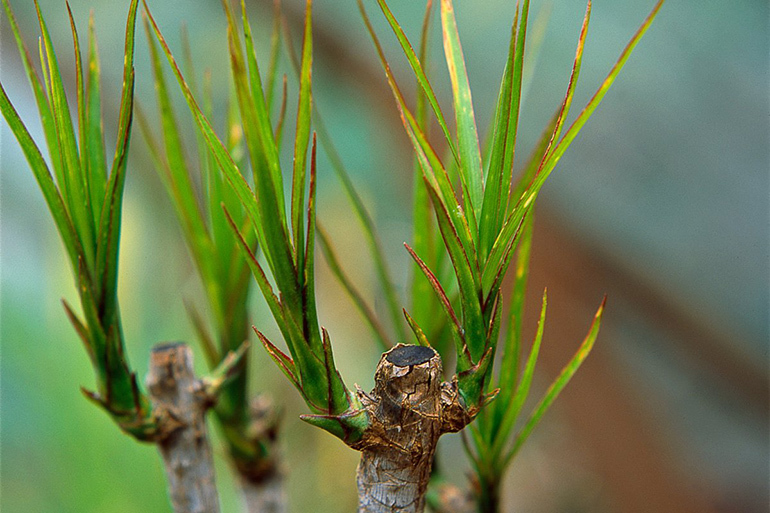
The process can be accelerated by treating the slice with a rooting stimulant.
Seeds
Dracaena rarely blooms indoors, even less often you can find a grower who shares the seeds. It's easier to buy them in a specialized store.
Sowing is carried out in this order:
- Soak the seeds in a growth stimulant solution.
- Cups are prepared with a moist peat-sandy substrate.
- Seeds are planted to a depth of about 1 cm; arrange a mini greenhouse.
- After germination, the film is removed, the seedlings are regularly watered.
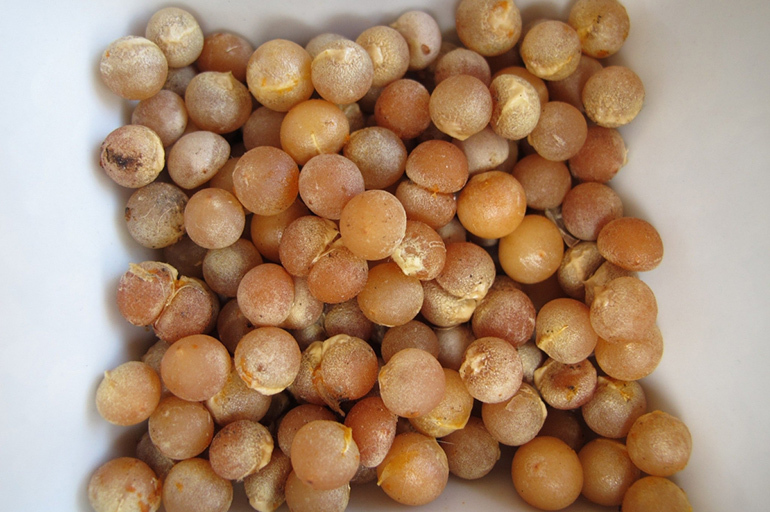
When the seedlings grow up to 4-5 cm, they are planted in a permanent place.
Dracaena reproduction
The easiest way to propagate room dracaena is by cuttings. Sections of the stem or the tip of the shoot are used as planting material.
Stem cuttings
For planting, you can use parts of the main trunk or side shoots. The cut must be done along the sheet scars; the length of the segments can be different (from 5 to 20 cm).
For rooting, cuttings are placed in a peat substrate, placed vertically or horizontally. To maintain high humidity, the container is covered with foil. At a temperature of + 20... 24 ° C, the roots develop within 20-25 days. A seedling with roots 2-3 cm long can be transplanted into a separate pot with nutritious soil.
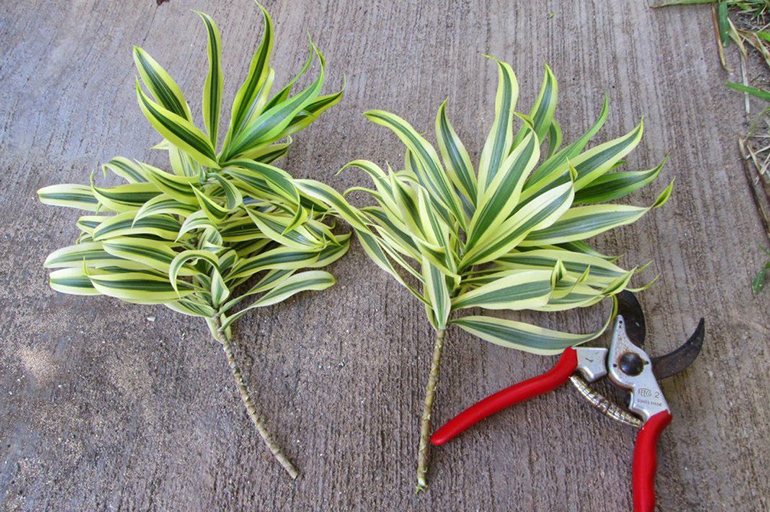
Apical cuttings
This method is more often used in plant rejuvenation. The upper part of the stem, together with the leaf rosette, is cut off with a sharp knife and placed in water or wet sand.
To ensure favorable conditions, the cutting is covered with a transparent bag and placed in a warm place, protected from direct sunlight and drafts. The greenhouse must be periodically ventilated, gradually accustoming the seedling to the open air.
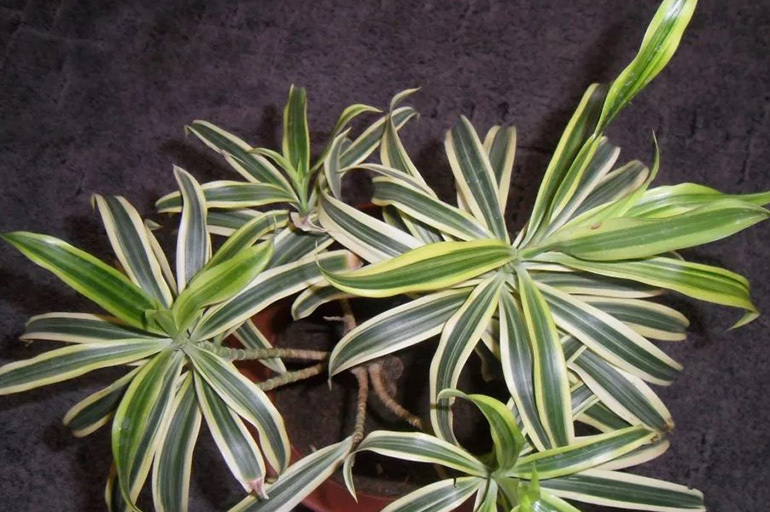
Care after landing
A young plant requires special attention and care; for the first feeding, half the dose of fertilizer should be used.
Top dressing
During the growing season, dracaena must be fed 1-2 times a month. It is useful to alternate mineral complexes and organics.
Poultry manure is often used as an organic fertilizer. It is poured with water (1: 4) and insisted in a sealed container for 4-5 days. Before use, dilute (1:15), apply at the root after abundant watering.
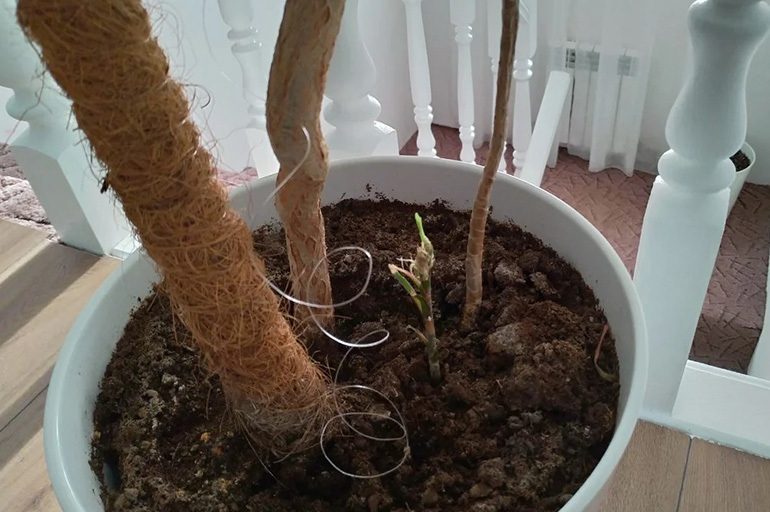
In a flower shop, you can buy a special fertilizer for dracaena, and complexes designed for deciduous crops, ficuses or succulents are also suitable.
A good effect is given by the use of nitroammofoska (1 tsp. l. for 1 liter of water).
Nutrients are well absorbed when spraying the leaves. For foliar feeding, prepare the following mixture:
- potassium nitrate - 0.5 g;
- ammonium sulfate - 0.3 g;
- potassium phosphate - 0.2 g;
- water - 1 l.
Fertilizers in granular form are scattered on the soil surface, and they gradually saturate the soil.
Watering
The frequency of watering depends on the temperature and humidity of the air, as well as on the type of crop. Dracaena with wide leaf plates consumes moisture faster than with narrow ones.
In summer, the plant is watered 1-2 times a week, in winter - 1-2 times a month.
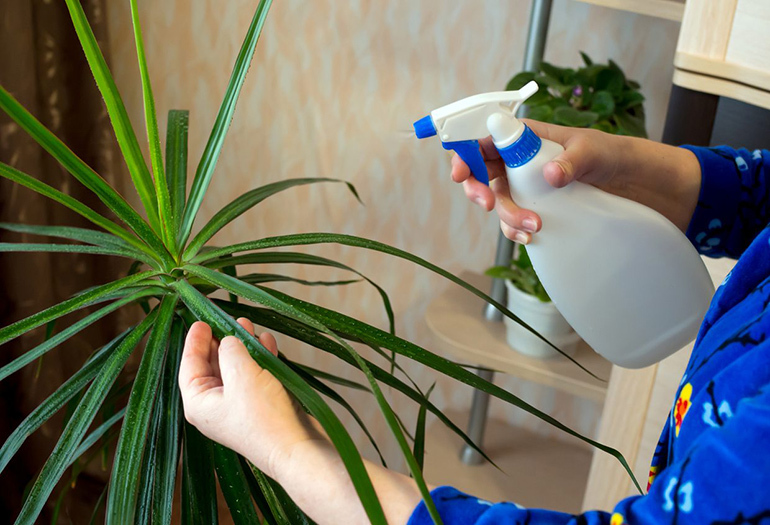
Tap water must be allowed to stand in an open container for at least a day. When using melt water, it is important to bring it to room temperature.
Pruning and shaping the bush
Formative pruning of dracaena is best done in the spring, during the growth period. A young tree can be pruned when it reaches 30-35 cm in height.
The top is cut with a knife or secateurs 5-6 cm below the base of the leaf rosette. The cut is treated with garden varnish or activated carbon powder.
To make the buds hatch faster, the trunk can be treated with phytohormones (just below the cut).
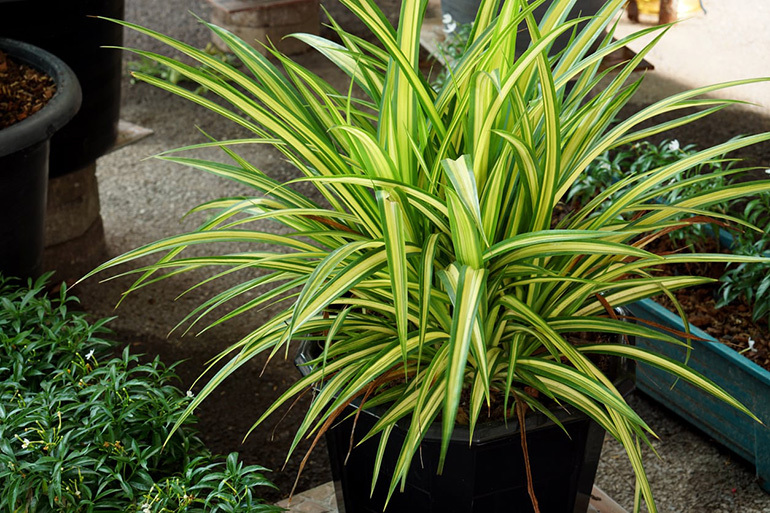
Old trees often lose their decorative effect: the stems stretch and bend, the leaves lose their elasticity and shine. In this case, the rejuvenation procedure becomes vital.
Transfer
Young 1-2 year old dracaena need a transplant after 2 years, adults - every 5 years. Do this before the onset of heat.
For a healthy plant, the transshipment method (together with a clod of earth) is suitable. Old or diseased specimens must be carefully examined, damaged parts of the root system must be removed.
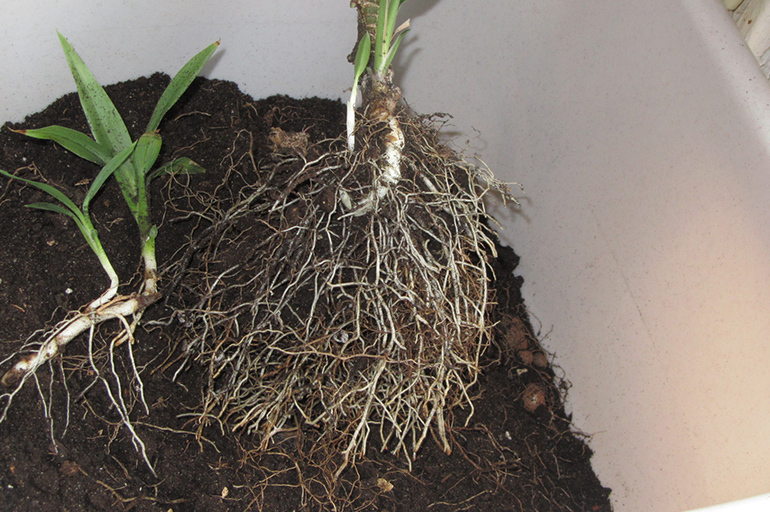
In winter, the palm tree is transplanted only if it needs to be saved from pests or diseases.
What time and how does dracaena bloom?
All kinds of dracaena bloom in the wild. At home - only a variety of fragrant dracaena. This happens every 8-10 years. Peduncles form in the axils of the leaf plates for about a year.
The flowers are white or creamy (sometimes with a greenish tinge), small, collected in a loose panicle. Only one drupe is formed from the ovary.
Diseases and pests of indoor palm
Dracaena is often affected by fungal diseases:
- Alternaria (dry spot). Infected leaves and trunk tissues wither and die off.
- Fusarium. The fungal infection spreads from the roots. After a short time, yellowish spots appear on the leaves, the trunk dries out.
- Wet rot. Watery spots can be seen on all parts of the plant. The disease is fleeting, dracaena dies in a few days.
- Bacteriosis. The tips of the leaf plates darken and dry out, small ulcers appear on the stems, separated from healthy tissues by a light yellow stripe.
A fungal infection can only be dealt with with the help of chemical or biological fungicides.
Scabbards, thrips, spider mites feed on plant juices. The process of photosynthesis is disrupted, the leaves turn yellow and fall off. The disease affects the ground part, then is transferred to the root system. Pest insects can not only slow down growth, but also completely destroy the plant.
At an early stage, you can fight parasites using folk methods using a solution of laundry soap, ammonia, tobacco broth or garlic infusion. In case of massive damage, only chemical methods will help: treatment with Fitoverm, Actellik, Fufanon, etc.
Effective preventive measures include proper care. It is necessary to maintain optimal humidity and temperature, prevent dust accumulation, and regularly apply fertilizers.
PreviousPlantsRules for caring for Golden Coast dracaena at home


